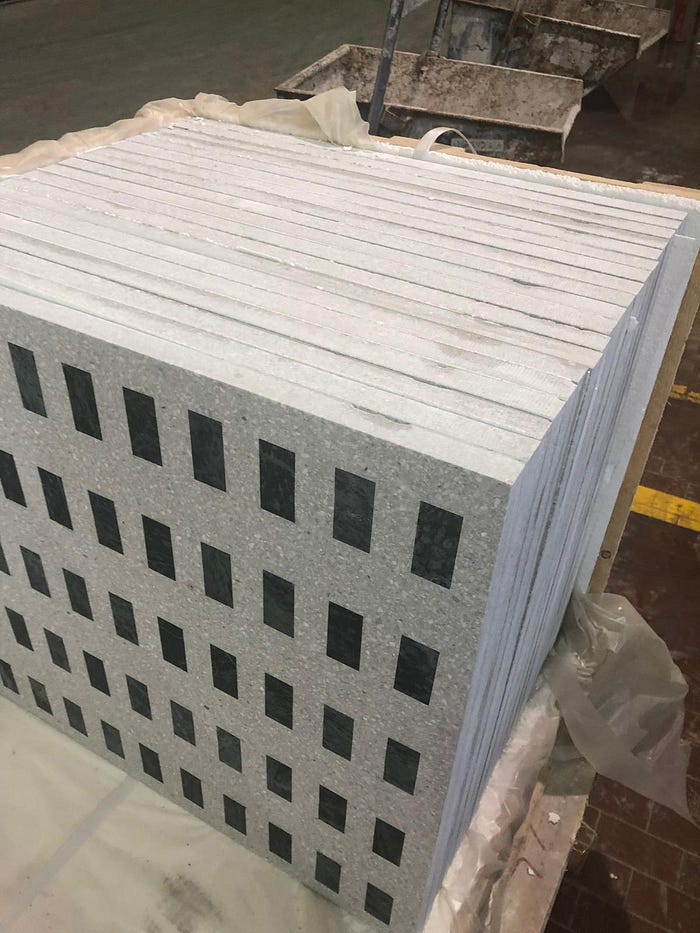What is terrazzo and how is it made?
Terrazzo is a traditional flooring technique from the area around Venice that is now coming back into fashion. At the origin, it was developed by the workers in marble quarries who couldn’t afford marble in their own homes. They took marble chips and chunks, and laid it down on an area followed by pouring a sort of concrete like mix onto it before polishing the floor up by hand.
Pompeii is home to very well preserved examples of this ancient technique thanks to the eruption of the Vesuvio if we can say. There are houses and palaces showcasing some beautiful floors, with incredible levels of details.

The techniques and the machines have greatly evolved as you can imagine but the spirit of terrazzo hasn’t. It’s a very versatile flooring material that can be found in various forms. Terrazzo these days is mostly found in tiles, which can be made in cement or resin, but the art of the in situ, which is poured on site terrazzo, is making a comeback too.
Terrazzo tiles
As previously introduced terrazzo was traditionally always poured on site, let to dry and then polished to reveal its aggregates. The issue with such a process is that it’s time consuming, labour intensive and doing large areas isn’t always straightforward.
The first innovation came by the production of individual cast terrazzo tiles. Those were fairly rudimentary at the start and involved simply the same process as in situ, but laid into a mould instead of onto a floor. The tiles were left to dry prior to being polished up. This technique enabled more square meters to be produced per day and in a controlled environment to guarantee better results.
This production method has since been improved with high tech machines which vibrate each tile as well as put it under vacuum in order to remove any air bubbles inside them. The result is far denser and thus stronger finish than previously.

Then a new type of machine appeared in the 90s to create terrazzo in a much more efficient way than individual tiles by producing blocs of terrazzo. This method essentially replicates the types of marble blocs quarried around the world. The blocs of terrazzo measure approximately 300x120cm, and are then sliced into slabs. You can get about 100sqm of terrazzo per bloc at 20mm thick, and at maximum capacity the factory can produce one every 15min.


In Situ Terrazzo
In situ terrazzo is the process of preparing a terrazzo mix and pouring it on site. This traditional method is being rediscovered by architects and interior designers as it allows for customisable designs regardless of square meters to be laid, and also reduces the need for joints.

The mixture once poured is let to dry for around 20 days if done in cement, and around 24hrs if done in resin. Once dry the floor is first grinded down by a couple millimetres in order to expose the marble chips and then polished to get the final result.

Looking for terrazzo, natural stone or precast concrete for one of your project? Get in touch with us: studio@variostone.com
